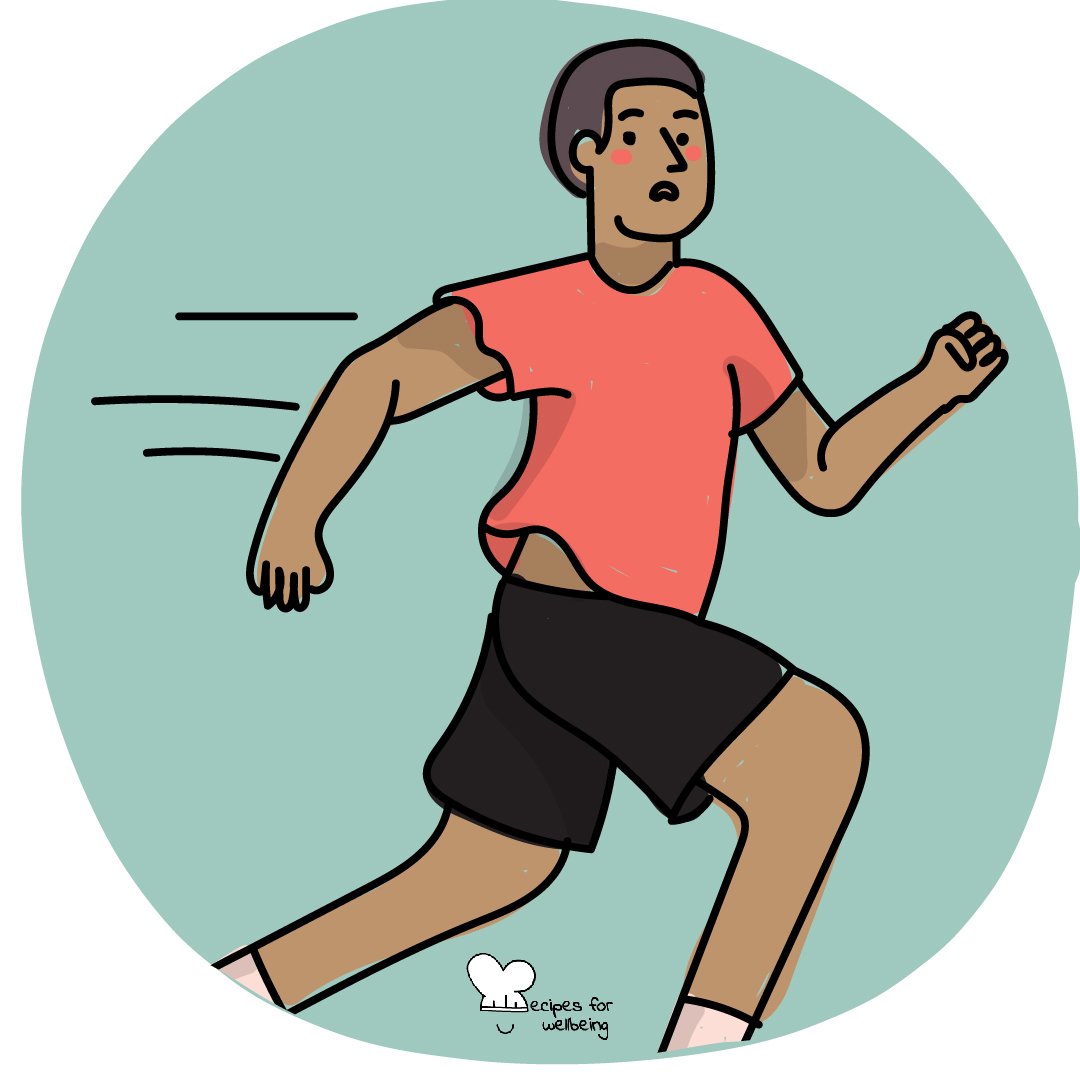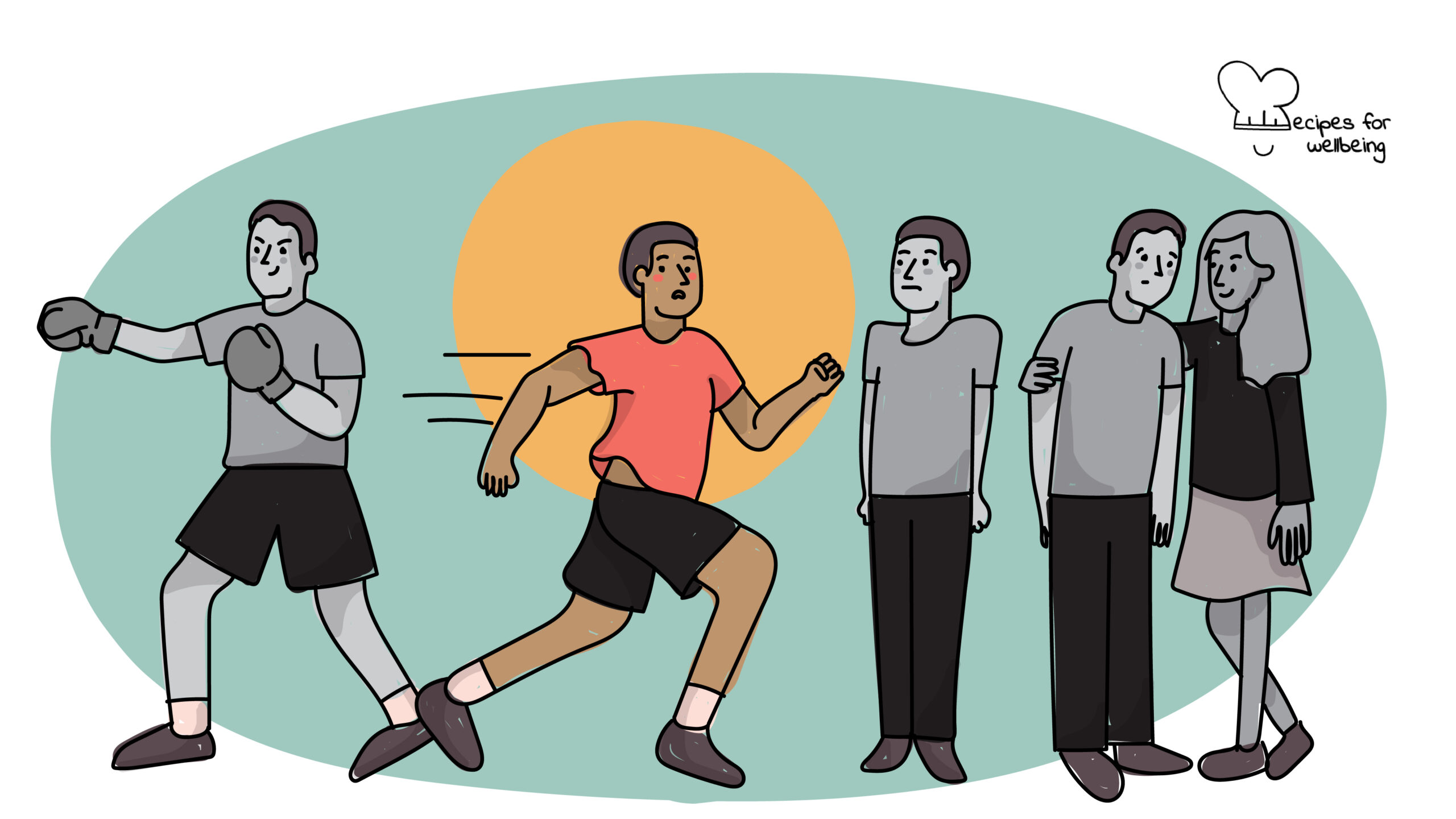
Managing the flight response
When you first encounter a potentially threatening situation, your emotional brain is on high alert, pumping you up with the cocktail of chemicals, led by adrenalin, which produces the classic ‘fight or flight’ response. But the more you expose yourself (and survive), the less fear you experience, because your emotional brain is getting the message that you can handle this kind of thing without a major panic. Familiarity breeds comfort. ―Mark McGuinness
👥 Serves: 1 person
🎚 Difficulty: Hard
⏳ Total time: Ongoing
🥣 Ingredients: Kindness, patience, “Understanding the ‘flight’ response: Anxiety, avoidance, and feeling safe” Being Well podcast episode (if you’re curious to find out more about it!)
🤓 Wholebeing Domains: Accomplishments, Awareness, Discomfortability
💪 Wholebeing Skills: Adaptability, Compassion, Determination, Discernment, Perspective, Planning, Self-awareness, Self-regulation, Stress management

Managing the flight response
📝 Description
Tips to shift from maladaptive to adaptive flight response.
This recipe is one of four dedicated to the topic of stress responses, looking specifically at the fight response. In a nutshell, a stress response is a way in which you can respond to stress in life. You might be familiar with the first three as the fourth one is newer:
- Fight response: You can fight it.
- Flight response: You can run away from it.
- Freeze: You can play dead like animals do.
- Fawn: You can try to appease the person who is hurting you.
Importantly, you have access to all four responses, but you tend to develop a habit (build early on in life) to focus on one of these responses. Remember that stress responses are adaptive, meaning that they’re here to help you solve problems. However, they can become maladaptive and not serve you well. Are you managing the more adaptive aspects of them or are you falling prey to the more problematic aspects of them?
The following activity has been inspired by a conversation between Forrest Hanson and Dr Rick Hanson on their Being Well podcast (Spotify & YouTube). To explore the other stress responses, check out the following recipes: “Managing the fight response”, “Managing the freeze response”, and “Managing the fawn response”.
👣 Steps
Step 1 – Understanding the flight response
The adaptive purpose of the flight response is to help you avoid, escape, or prevent harm from various stressors. This is extremely helpful, but there are certain stressors in life that are either unavoidable or beneficial to your growth. What does the flight response look like? You may have an image of anxiety or fleeing from something, but there are other less visible nuances that fall into the category of avoidance coping. Dr Hanson shares the most common six avoidance coping:
- Social withdrawal
- Conflict avoidance
- Procrastination
- Emotional numbing
- Environmental change
- Denial
Step 2 – How to distinguish when it’s adaptive or maladaptive?
Ask yourself this: Is this behaviour safety-preserving or comfort-preserving? It’s easy to interpret threats to your comfort as threats to your safety so it’s helpful to discern the nature of reality outside and inside of yourself. Here are three questions to help you build discernment:
- How likely is it?
- How bad would it be if it did happen?
- What would you do if it did happen? What resources do you have available to you? What are the moves you could make? What do you have access to today that you didn’t have when you were a child?
Step 3 – Tips to manage the flight response
Dr Hanson suggests the following six-step process to deal with the anxiety caused by the flight response:
- Get in touch with the feeling instead of denying or pushing it away. If you struggle with this step, check out the recipe “Colourful confusions”.
- Extend self-compassion toward yourself. If this is really difficult for you, try the recipe “Self-compassion for your inner child”.
- Deepen your exploration to get to the core of your fear. The recipe “10 categories of fear” might provide you with a helpful compass to name your fears.
- Explore ways to get on your own side. Take some time to go through the recipe “Finding your inner refuge”.
- Build determination to apply effort day after day. Apply the recipe “Habit tracker” to stay on track.
- Make good plans. Check out the recipe “Weekly planner for uncertain times” for inspiration.

